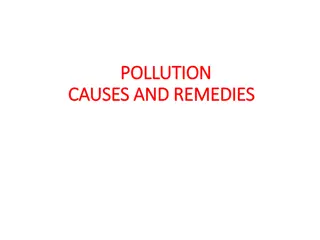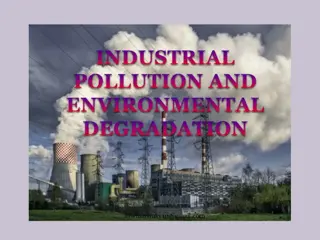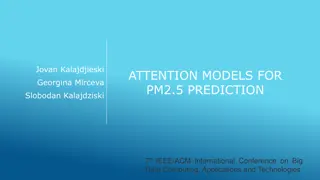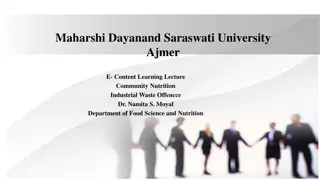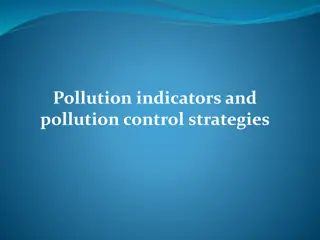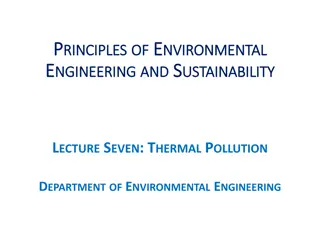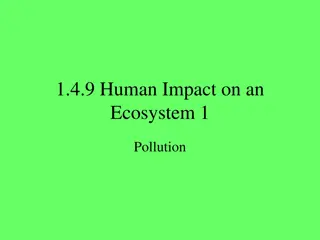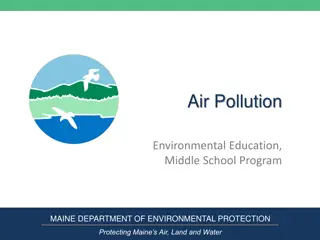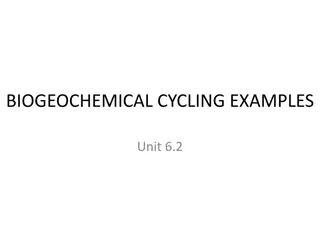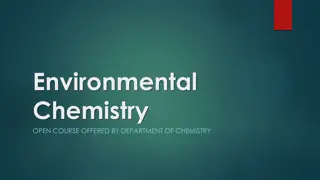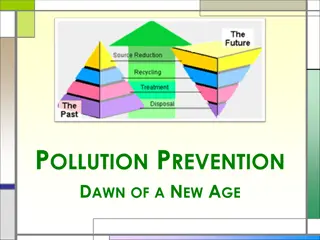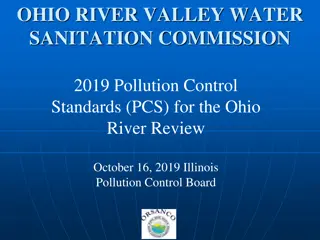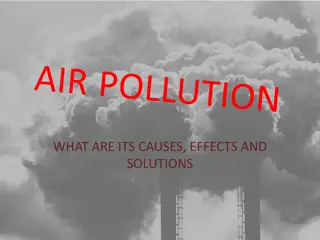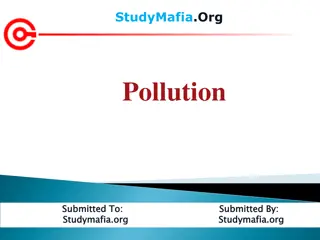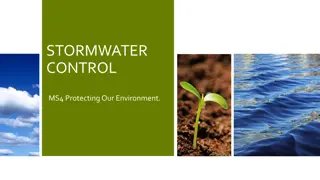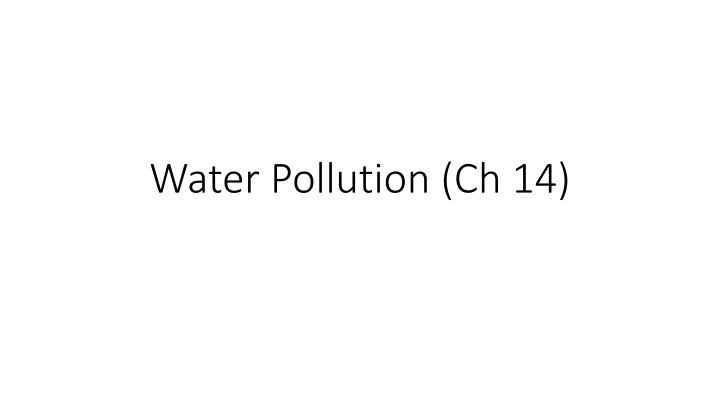
Water Pollution and Its Impact on Aquatic Life
Explore the detrimental effects of water pollution, including organic waste contamination, biochemical oxygen demand, eutrophication, disease-causing organisms, and septic system management. Discover the consequences of pollution on water quality and aquatic ecosystems, highlighting the importance of sustainable water management practices.
Download Presentation

Please find below an Image/Link to download the presentation.
The content on the website is provided AS IS for your information and personal use only. It may not be sold, licensed, or shared on other websites without obtaining consent from the author. If you encounter any issues during the download, it is possible that the publisher has removed the file from their server.
You are allowed to download the files provided on this website for personal or commercial use, subject to the condition that they are used lawfully. All files are the property of their respective owners.
The content on the website is provided AS IS for your information and personal use only. It may not be sold, licensed, or shared on other websites without obtaining consent from the author.
E N D
Presentation Transcript
Pollution from organic waste All creatures produce waste (feces, fallen leaves ) Waste contains nutrients that other organisms can use
Biochemical Oxygen Demand Microorganisms in water break it down Requires oxygen More organic matter means more to break down Increase in BOD (Biochemical Oxygen Demand) High BOD means less dissolved oxygen remaining Can kill fish and other aquatic life Results in a dead zone
Eutrophication Waste contain nitrogen and phosphorus, which add nutrients to the water Called eutrophication When human caused, called cultural eutrophication Usually either raw sewage or fertilizer Algae respond to the sudden nutrient influx with rapid growth Some algae produce substances that are directly toxic to humans and animals Algae die, and decomposers start to break them down Dead zone (nearly always human caused)
A red tide (red algae produces a neurotoxin) Photo: Kai Schumann
Disease Causing Organisms Sewage has harmful bacteria (duh) Can end up in ground water (usually shallow wells with porous soils) Causes disease Hepatitis A (viral liver infection that last about 8 weeks) Typhoid fever (moderately serious bacterial illness) Dysentery (bacterial illness that causes extreme diarrhea) Presence of harmless fecal coliform bacteria (often e. coli) serves as an indicator for the possibility of harmful strains
Septic system (images: US EPA, Beth Clawson MSU) Tank allows solids to settle and oils to float Microbes break down oil (scum) layer Solid (sludge) layer needs to be pumped out Wastewater goes to drainfield (aka leechfield) Slowly released into soil and broken down
Combined Sewer System (Mostly 1930s and earlier) Wastewater and storm water collected together When there is excess rain, can overflow, leading to water pollution Can also back up in this case, flooding homes with sewage
Sanitary Sewer system (Modern design) Only wastewater Must also have dedicated storm drains Overflows of dedicated storm drains are less harmful Overflows of sanitary sewer are much less common Can result from stormwater or from blocked pipes Main advantage is that treatment of un-diluted waste is much easier
Treatment plants (image: US EPA). Clean water act lays out minimum standards for wastewater Sometimes raw sewage is still discharged during flooding (mostly from combined sewers). Modern system (Primary) Screen: filter out rags, diapers, etc. Don t flush these sorts of things Grit chamber: allow sand and pebbles to fall to the bottom Sedimentation tank: allows lighter solids to fall out (ie sludge or primary biosolids )
Treatment plants, cont. (Image: US EPA) Secondary treatment Wastewater goes to either a trickling filter (porous media with lots of microbes) or to an aerator (air injected tank with lots of microbes) to be further processed Generally removes 70-90% of material Sanitized with chlorine or ozone May be removed before dumping Some Cities have more advanced treatment Read more: https://www3.epa.gov/npdes/pubs/primer.pdf
Wastewater https://unesdoc.unesco.org/ark:/48223/pf0000247553
Chemical Water Pollution Heavy metals Lead from pipes Mercury from industrial waste Cadmium from batteries Arsenic from natural sources All are not particularly acutely toxic, but chronically neurotoxic Relatively difficult to remove Pharmaceuticals Birth control Steroids Anti-biotics
Chemical water pollution PCBs Used to make plastic before 1980 Very hydrophobic Very long environmental half life and biological half life Endocrine disruptor (blocks thyroid function, mimics estradiol) Mutagenic, carcinogenic Also acutely toxic to the liver Perchlorates Moderately strong oxidizing agents used in rocket fuels Toxic to most life Low level toxic effects not well studied
Oxygen toxicity Oxygen causes cell necrosis, other oxidative species cause apoptosis https://www.jbc.org/article/S0021-9258(18)37304-6/fulltext Oxidative species damage DNA, among other things https://www.ncbi.nlm.nih.gov/pmc/articles/PMC5927356/ Oxidative stress is likely a major contributor to telomere shortening https://www.ncbi.nlm.nih.gov/pmc/articles/PMC6162185/
Oil pollution When crude oil is spilled, it floats Very toxic to seabirds and marine mammals Options for removal/cleanup Plastic floating walls can isolate the spill Absorbent materials can suck up the spill Surfactants and solvents can be used to allow the water to mix with water Makes the spill worse for life under the surface Burn it Massive air pollution Leaves residue behind that is somewhat toxic
Discussion Questions What can be done with wastewater? What options exist for increasing access to clean water in impoverished countries? This paper found that the Ogallala aquifer showed signs of localized pollution in the vicinity of fracking operations. Should fracking near the aquifer be banned? Should new restrictions on wastewater cleanliness be imposed? Should the Ogallala aquifer continue to be used as a major water source?

